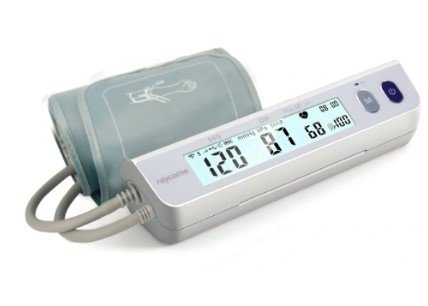The Importance of Data Analytics in Optimizing Medical Labs and Phlebotomy Departments' Supply Chain Management
Summary
- Data analytics can help medical labs and phlebotomy departments in the United States optimize their Supply Chain management by analyzing trends, predicting demand, and reducing wastage.
- By utilizing data analytics, healthcare facilities can streamline their inventory processes, prevent stockouts, and ensure that patients receive the care they need in a timely manner.
- This technology can also help in identifying cost-saving opportunities, improving budget allocation, and enhancing overall operational efficiency within medical labs and phlebotomy departments.
The Importance of Data Analytics in Medical Labs
Medical labs play a crucial role in diagnosing and treating patients, conducting various tests, and generating insightful data to aid in medical decision-making. However, managing the inventory of supplies and equipment in these facilities can be a challenging task, especially when dealing with perishable items, high-demand products, and limited storage space.
By harnessing the power of data analytics, medical labs can gain valuable insights into their Supply Chain operations, identify areas for improvement, and make informed decisions to enhance efficiency and reduce costs.
Benefits of Data Analytics in Medical Labs
-
Optimizing Inventory Management: Data analytics can help medical labs monitor their stock levels, track usage patterns, and forecast future demands. This information can enable them to maintain adequate supplies, prevent shortages, and avoid excess inventory, ultimately improving operational efficiency.
-
Reducing Waste: By analyzing data on expiration dates, usage rates, and ordering patterns, medical labs can minimize the risk of wastage and spoilage of supplies. This can lead to cost savings and ensure that resources are allocated effectively.
-
Enhancing Patient Care: Efficient Supply Chain management can help medical labs deliver timely and accurate Test Results to Healthcare Providers, enabling them to make informed treatment decisions and provide quality care to patients.
Utilizing Data Analytics in Phlebotomy Departments
Phlebotomy departments are responsible for collecting blood samples from patients for diagnostic testing, transfusions, and research purposes. To ensure smooth operations and deliver accurate results, these facilities must have access to the necessary supplies and equipment at all times.
With the help of data analytics, phlebotomy departments can streamline their inventory processes, identify trends in patient volumes, and optimize resource allocation to meet the demands of Healthcare Providers and patients effectively.
Enhancing Supply Efficiency in Phlebotomy Departments
-
Real-Time Monitoring: Data analytics can provide phlebotomy departments with real-time updates on supplies levels, usage rates, and demand fluctuations. This information allows them to adjust their inventory levels on the fly and respond quickly to changing needs.
-
Forecasting Demand: By analyzing historical data and trends, phlebotomy departments can forecast future demand for supplies and equipment accurately. This proactive approach can help them avoid stockouts, backorders, and delays in patient care.
-
Cost Saving Opportunities: Data analytics can help phlebotomy departments identify cost-saving opportunities, such as bulk purchasing, price negotiations, and vendor consolidation. By leveraging this information, they can optimize their procurement processes and reduce operational expenses.
Conclusion
Overall, data analytics can play a critical role in enhancing hospital supply efficiency in medical labs and phlebotomy departments in the United States. By leveraging this technology, healthcare facilities can optimize their inventory management, reduce waste, and improve patient care outcomes. As the healthcare industry continues to evolve, incorporating data analytics into Supply Chain operations will become increasingly important for ensuring the sustainability and success of medical labs and phlebotomy departments.

Disclaimer: The content provided on this blog is for informational purposes only, reflecting the personal opinions and insights of the author(s) on the topics. The information provided should not be used for diagnosing or treating a health problem or disease, and those seeking personal medical advice should consult with a licensed physician. Always seek the advice of your doctor or other qualified health provider regarding a medical condition. Never disregard professional medical advice or delay in seeking it because of something you have read on this website. If you think you may have a medical emergency, call 911 or go to the nearest emergency room immediately. No physician-patient relationship is created by this web site or its use. No contributors to this web site make any representations, express or implied, with respect to the information provided herein or to its use. While we strive to share accurate and up-to-date information, we cannot guarantee the completeness, reliability, or accuracy of the content. The blog may also include links to external websites and resources for the convenience of our readers. Please note that linking to other sites does not imply endorsement of their content, practices, or services by us. Readers should use their discretion and judgment while exploring any external links and resources mentioned on this blog.
